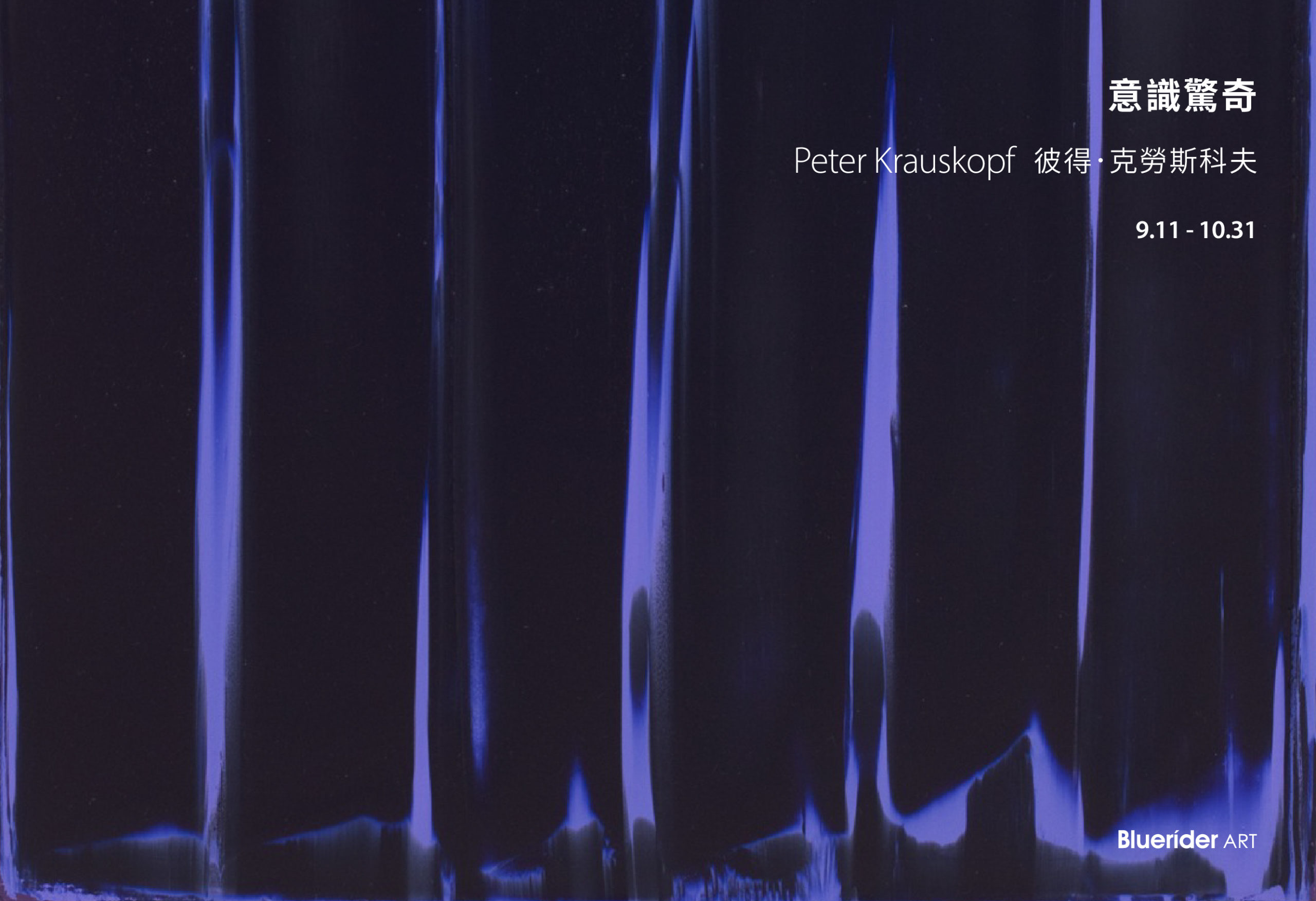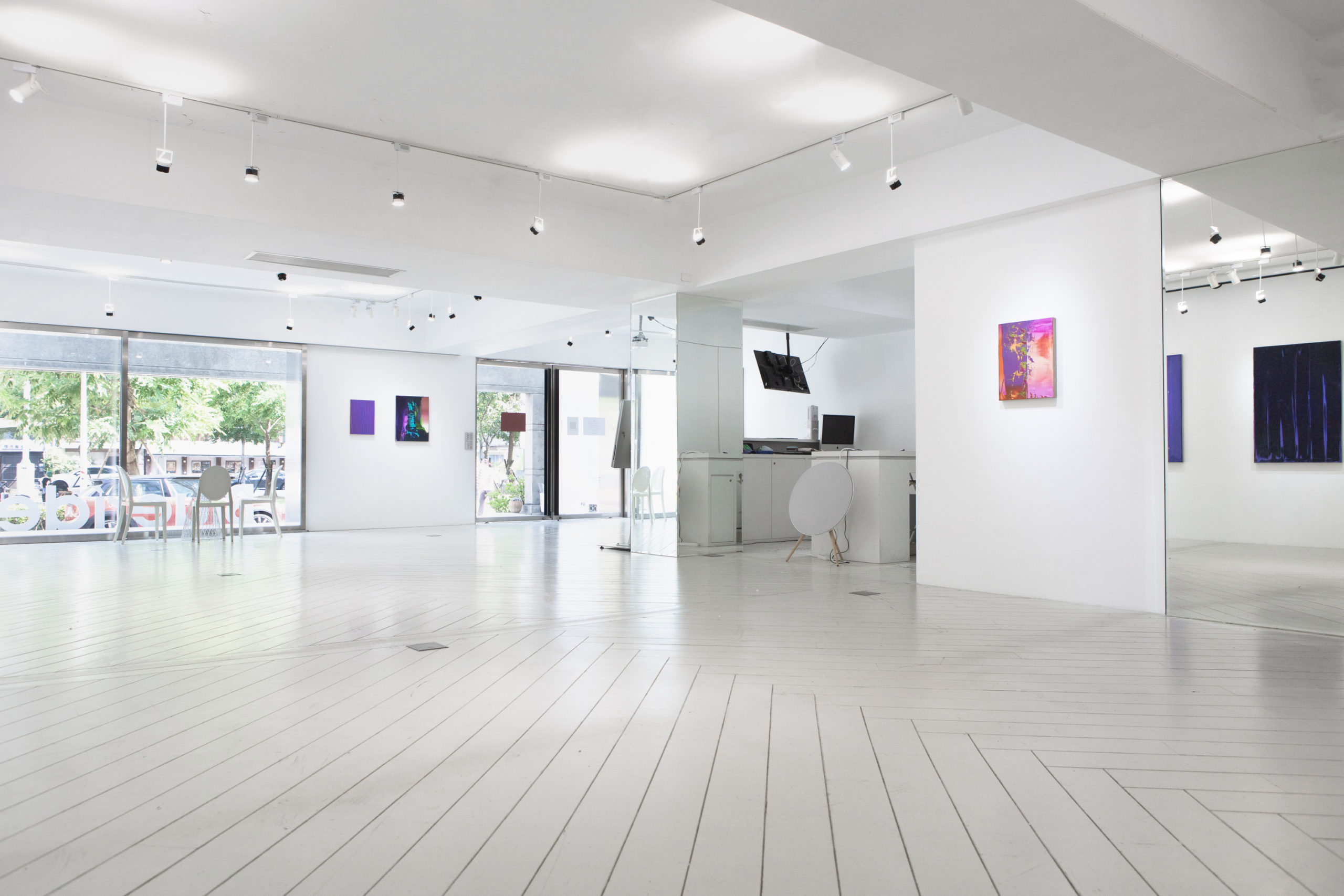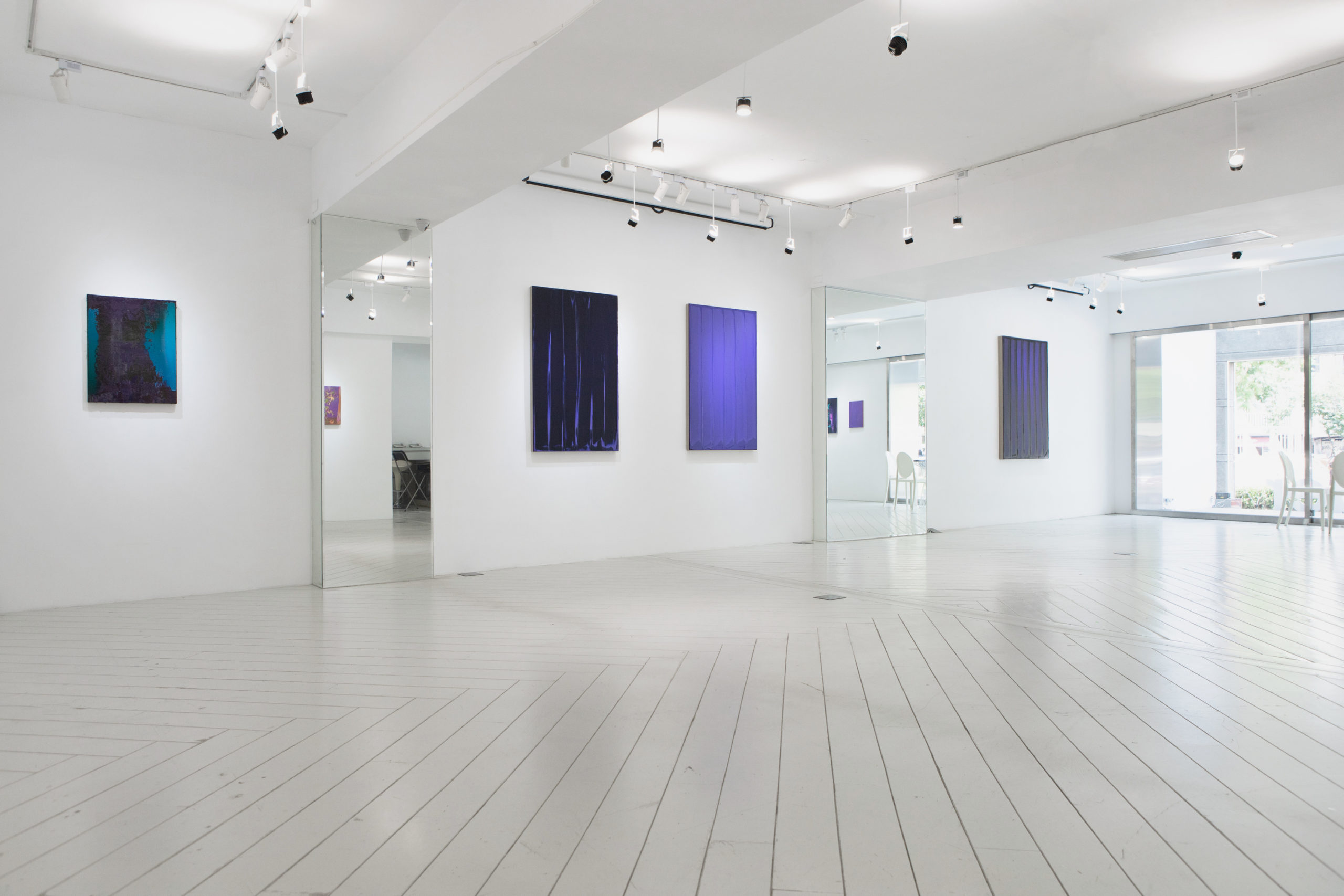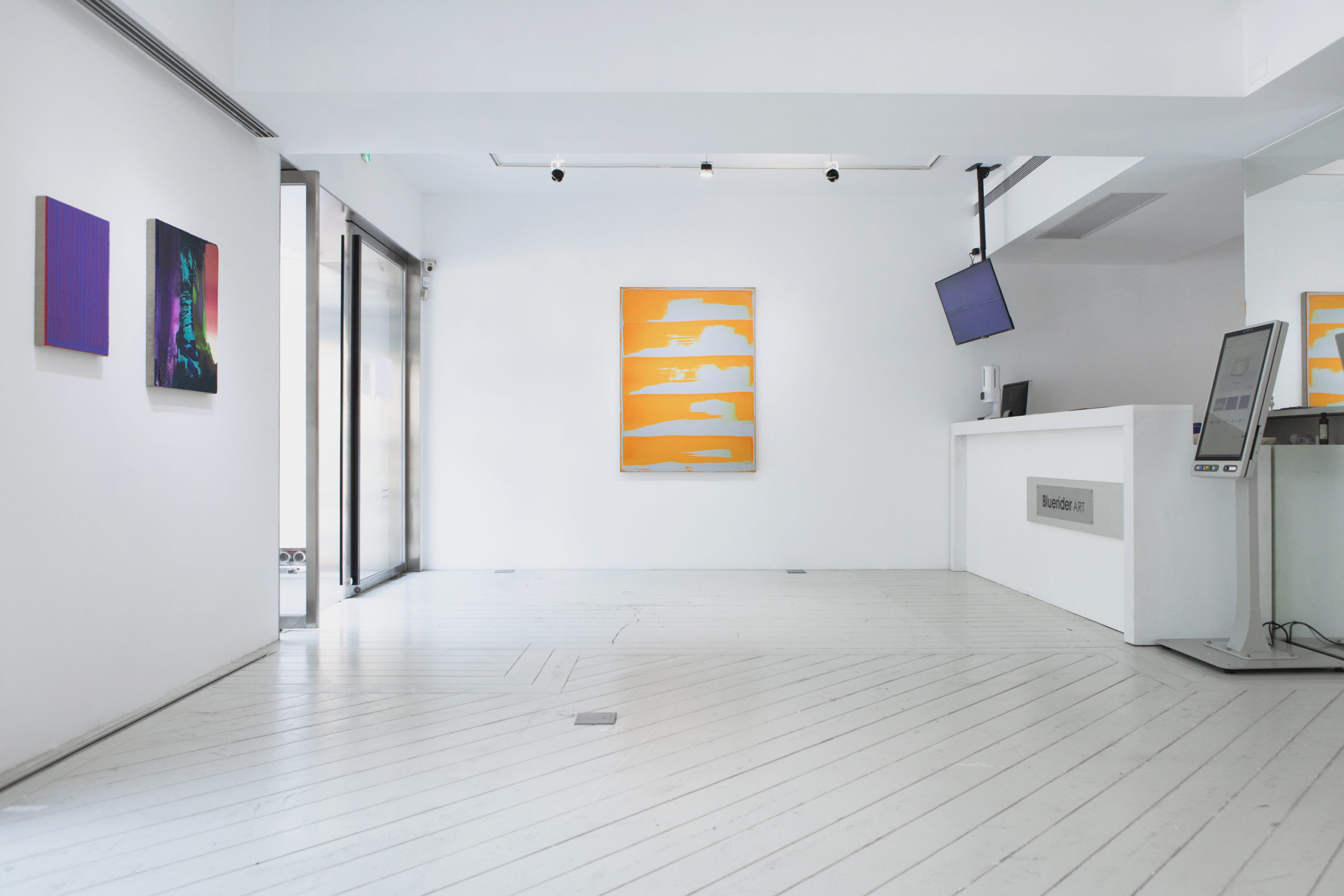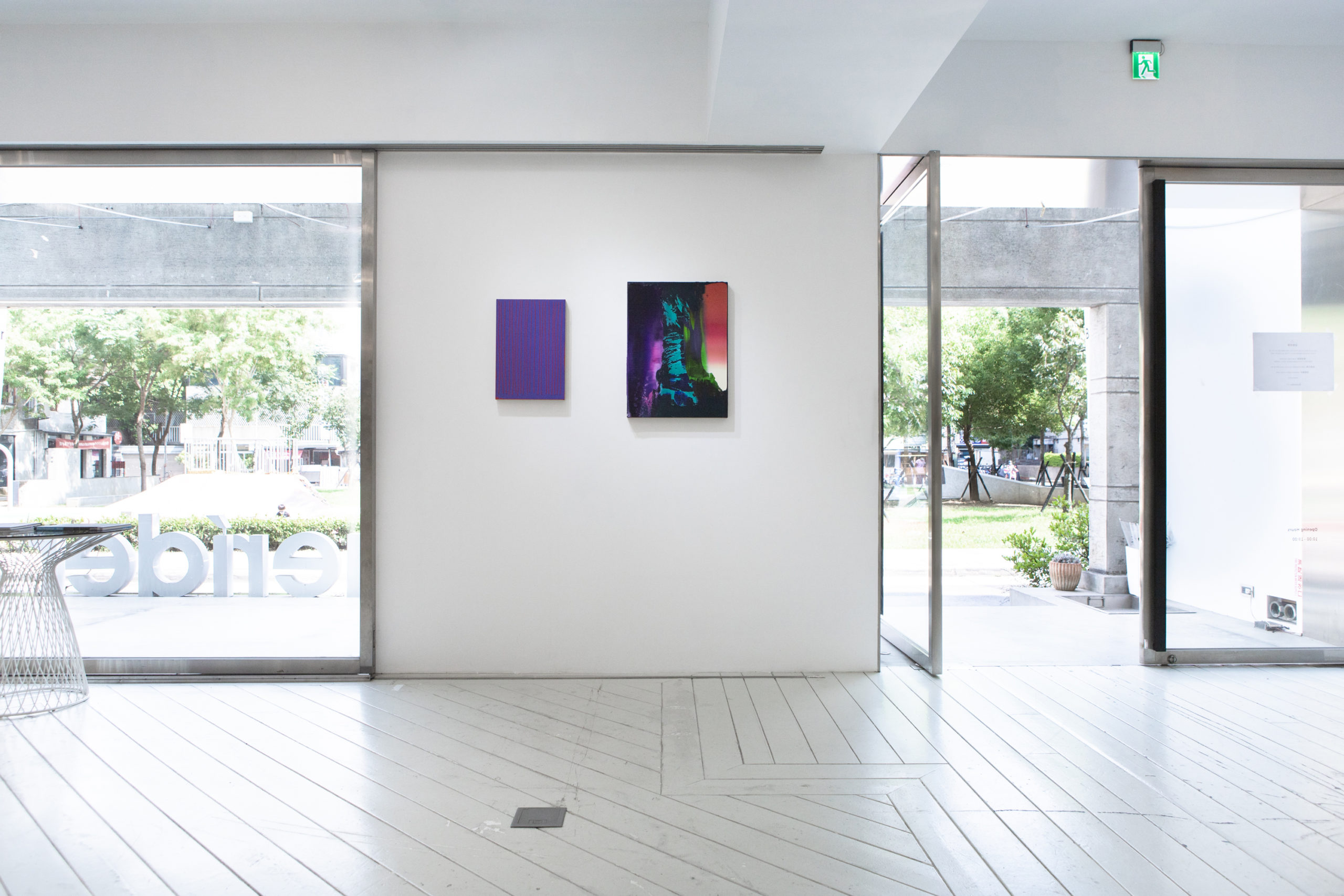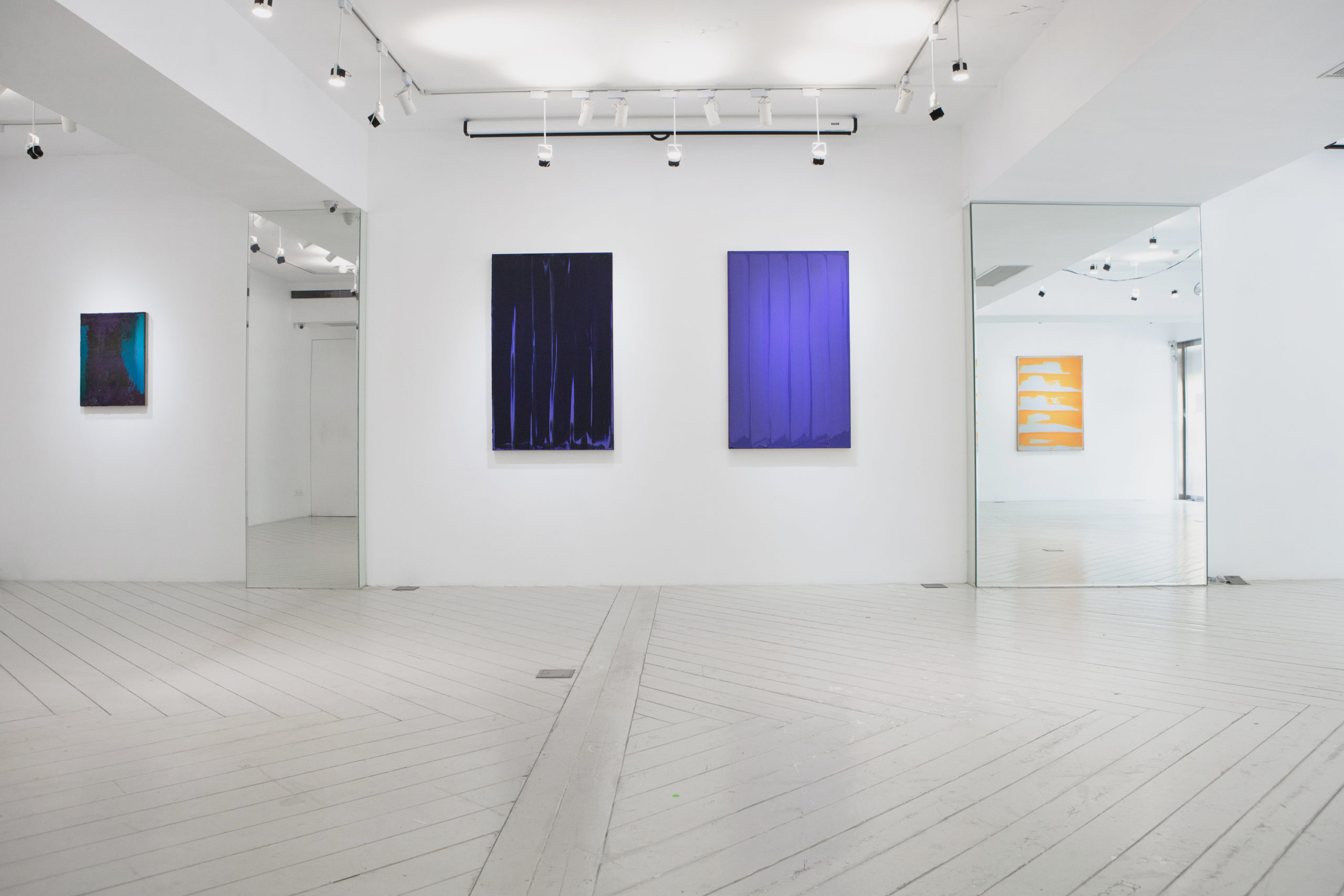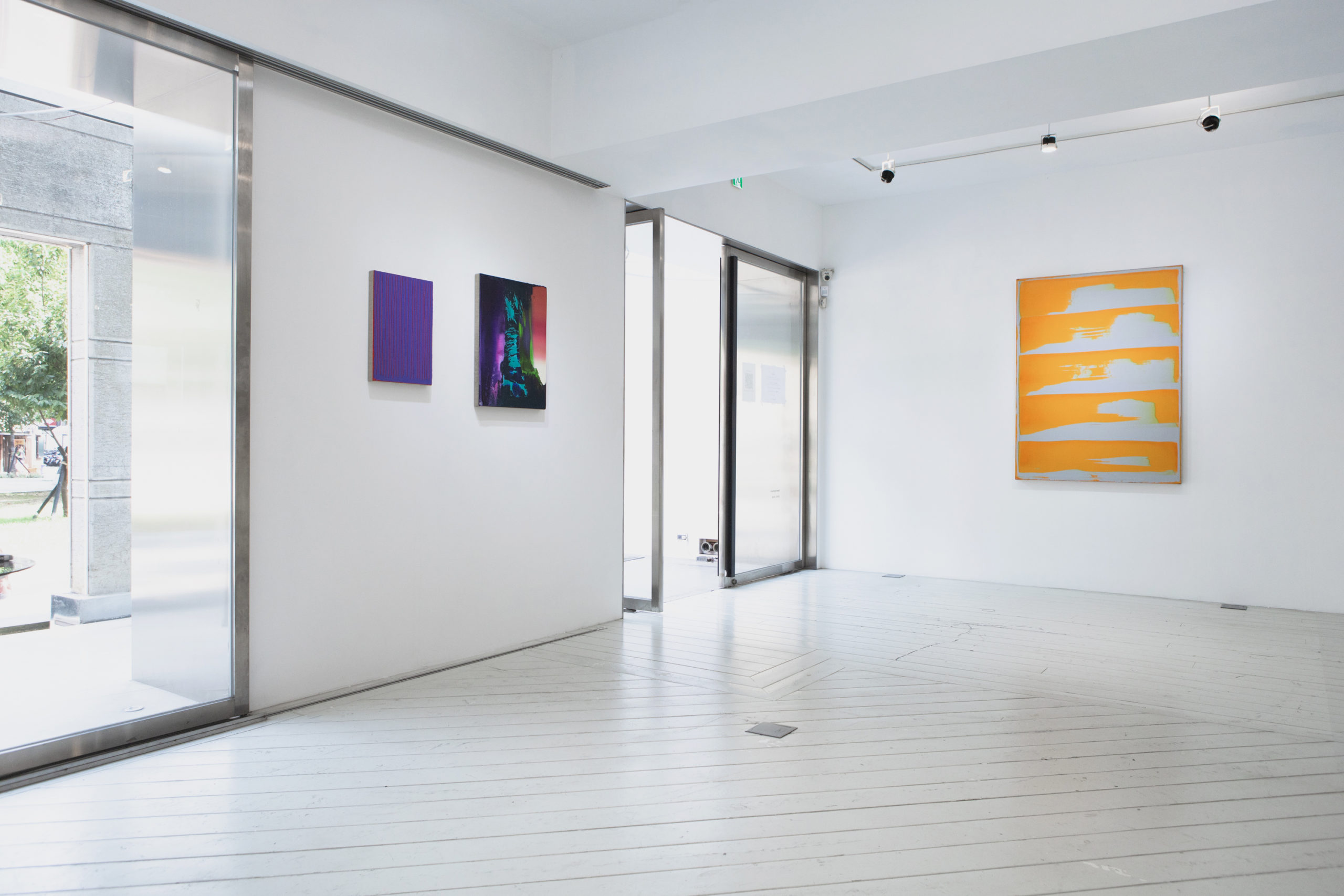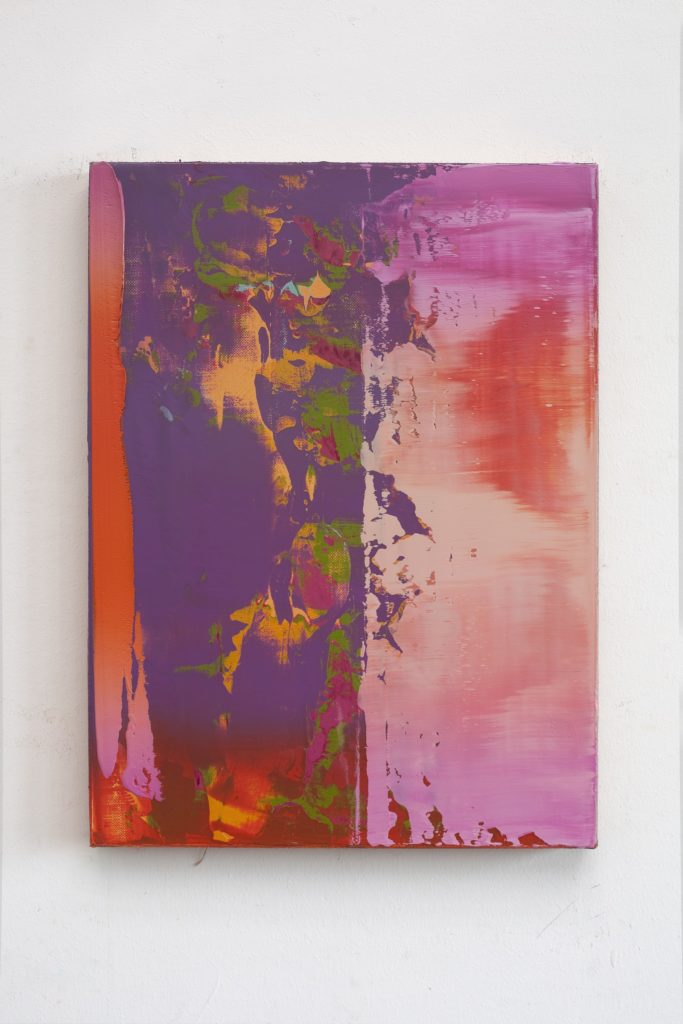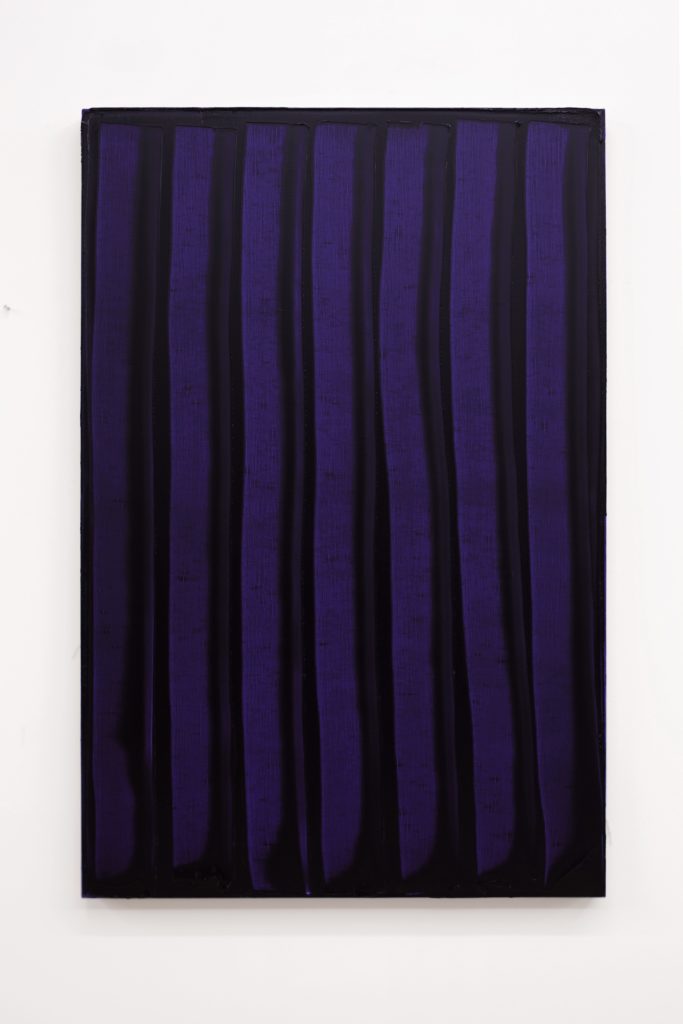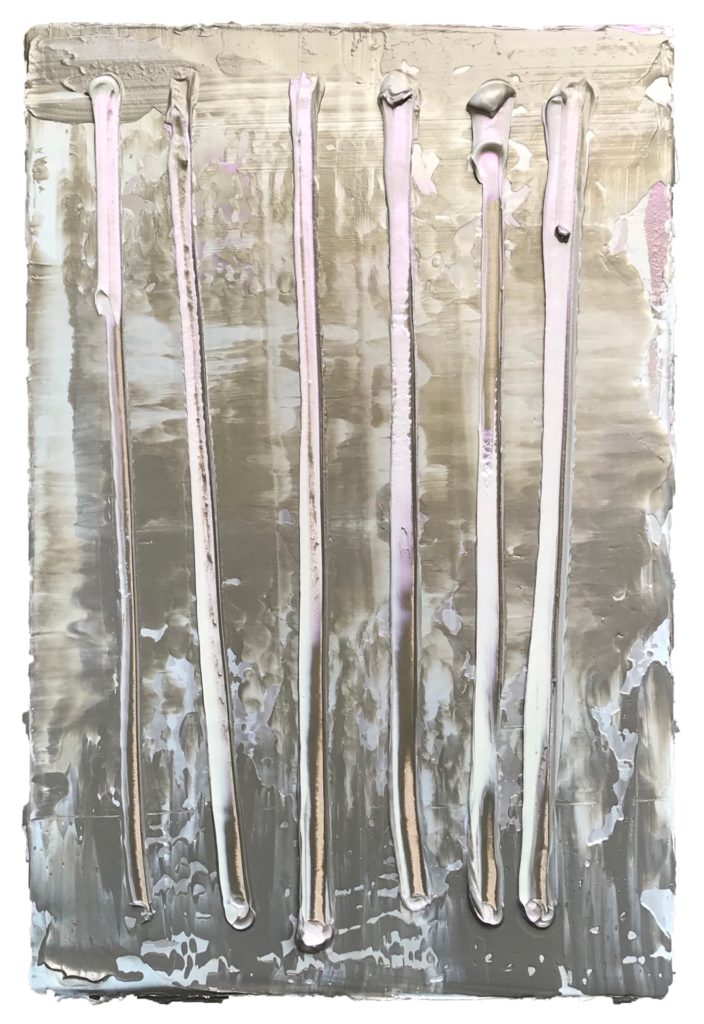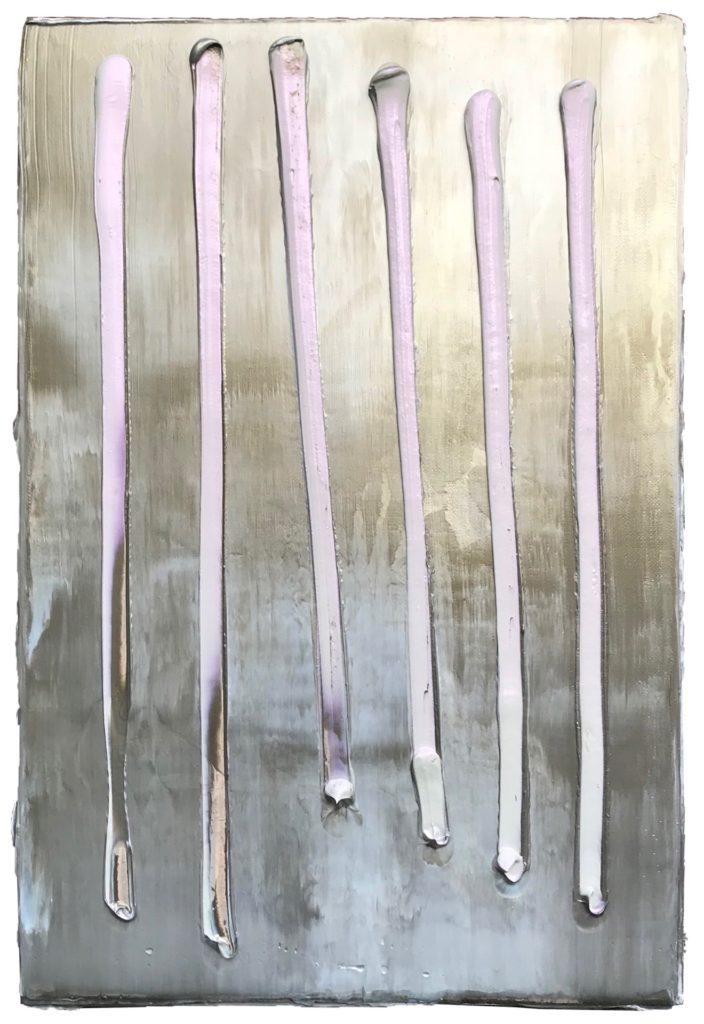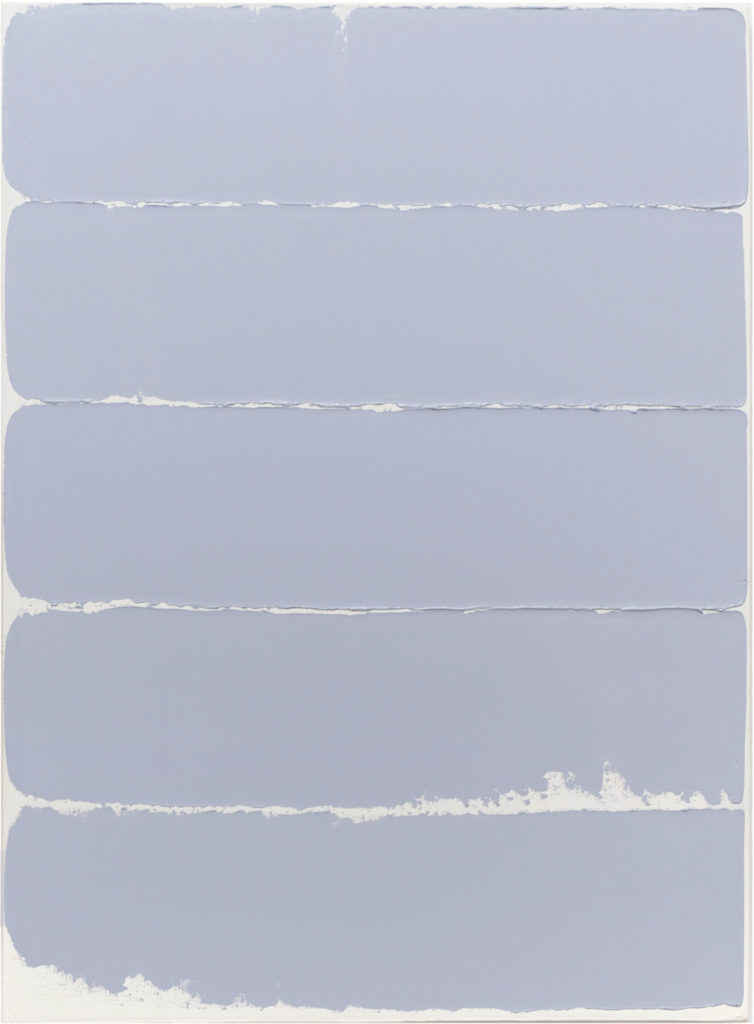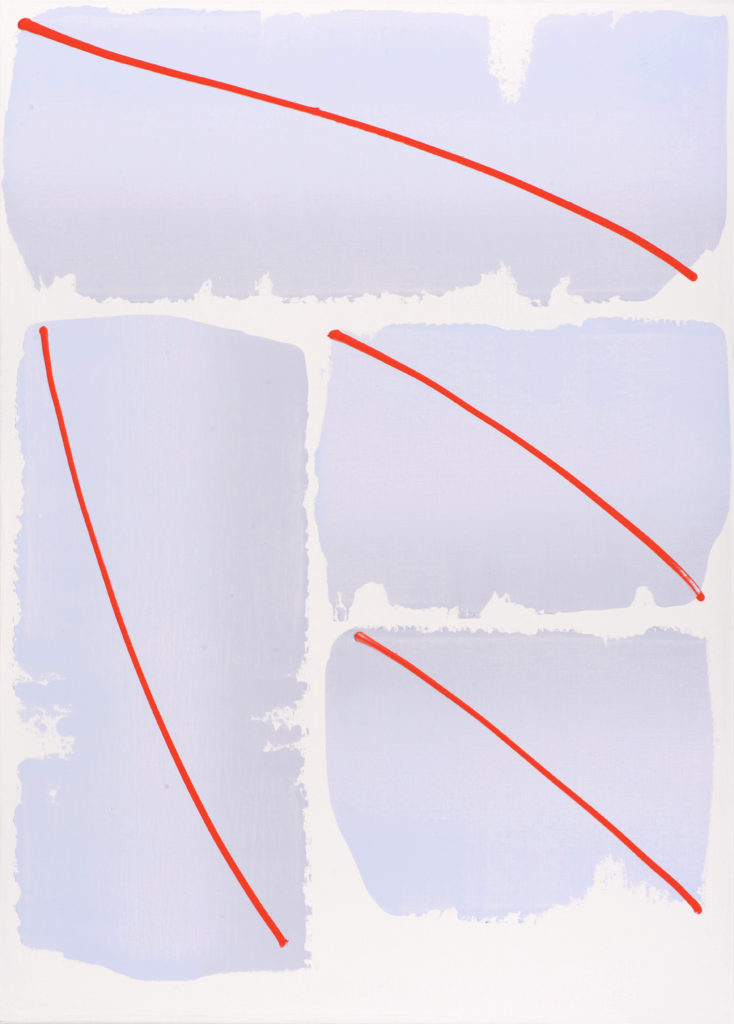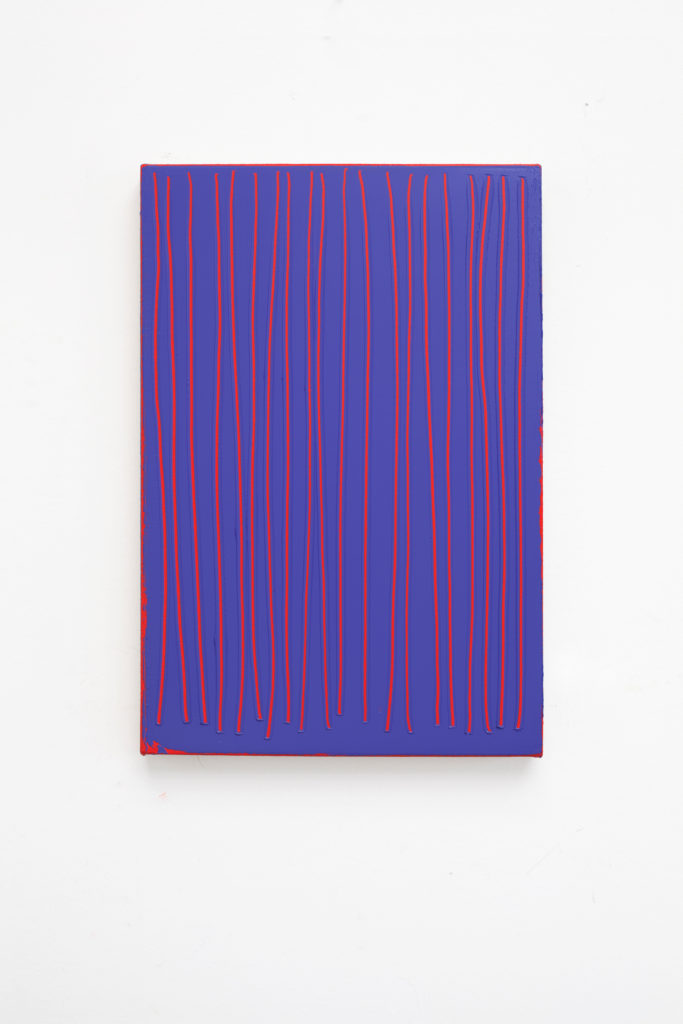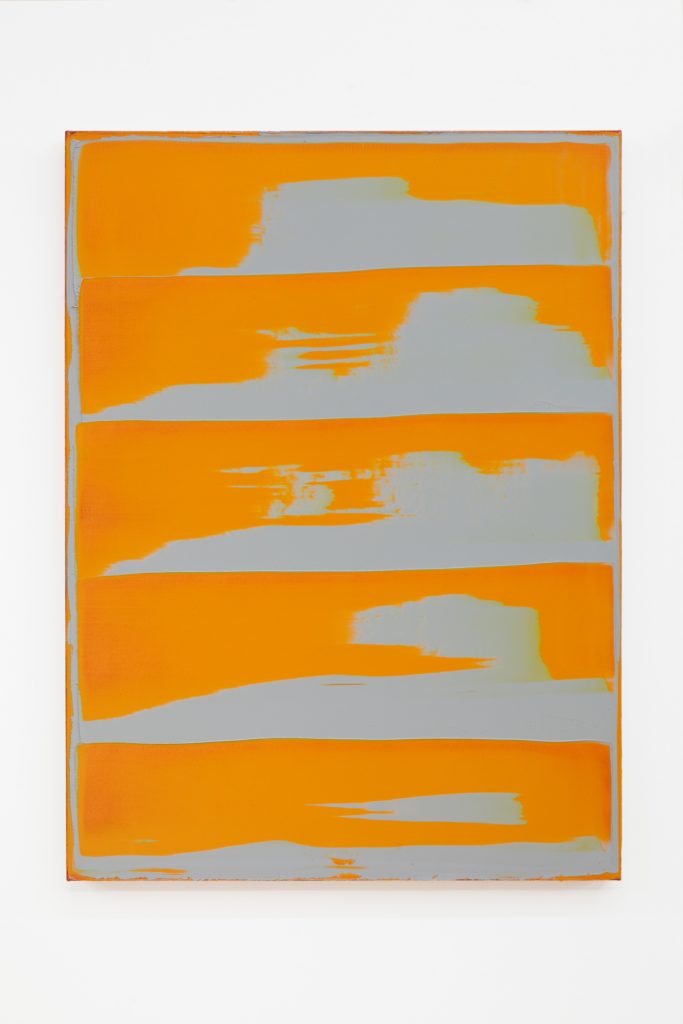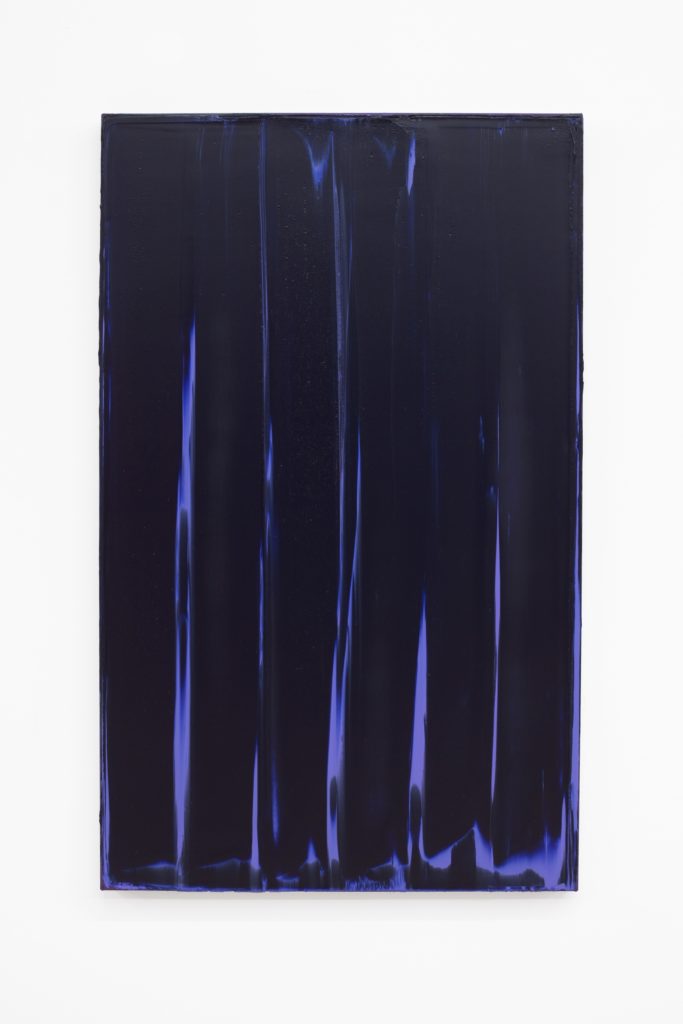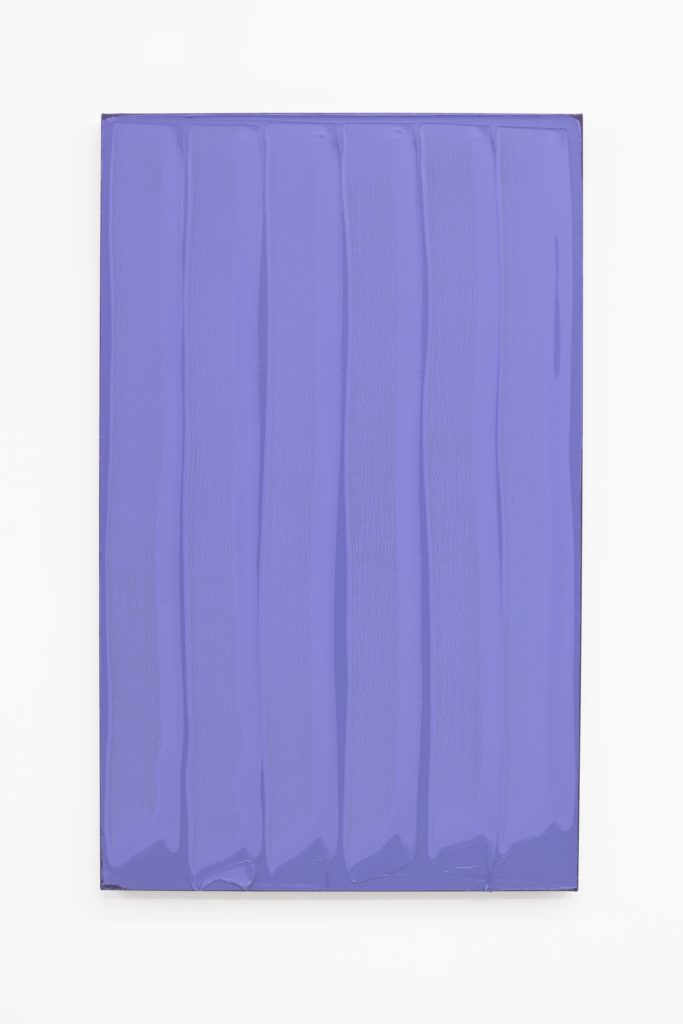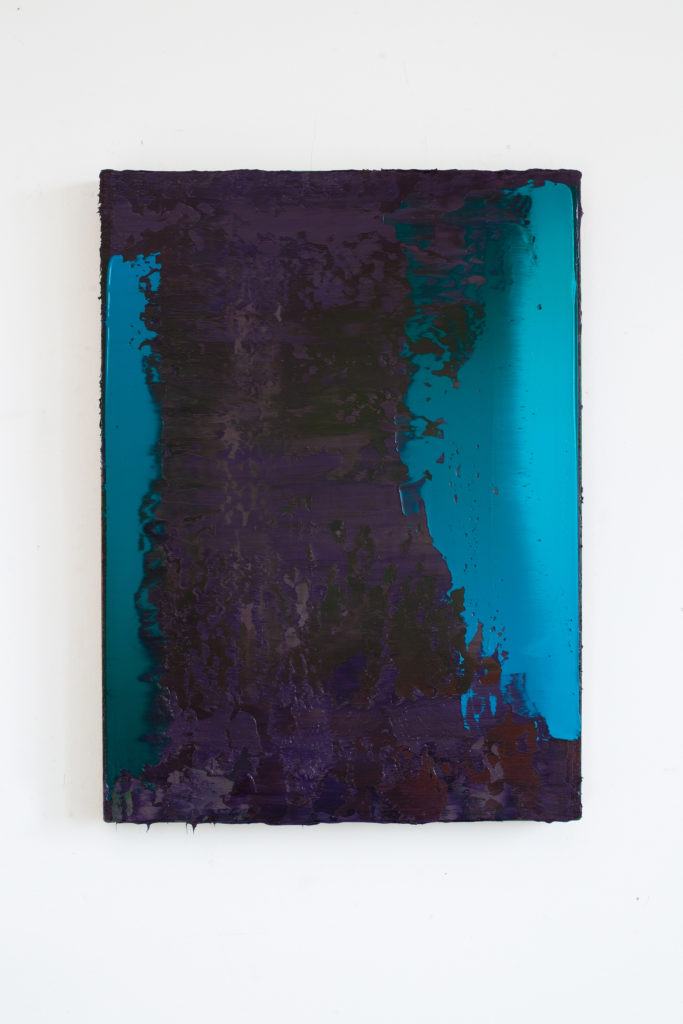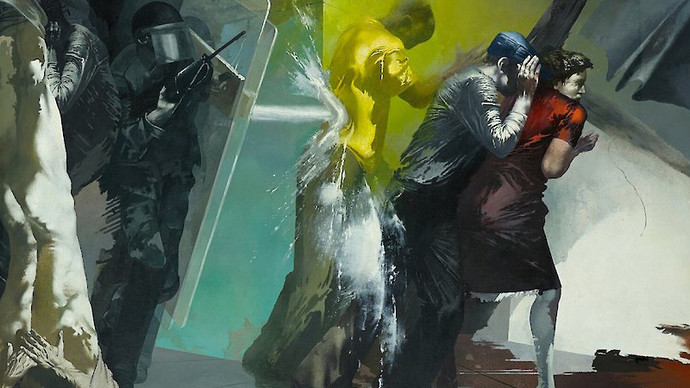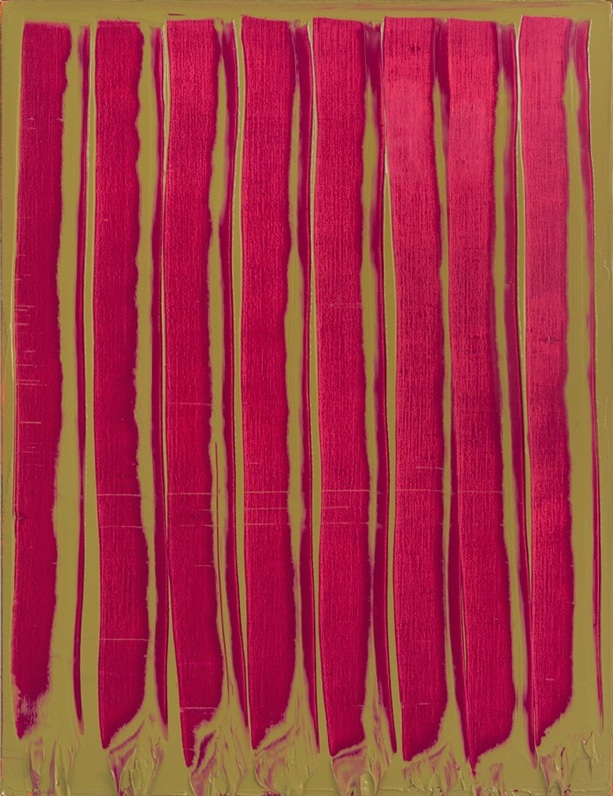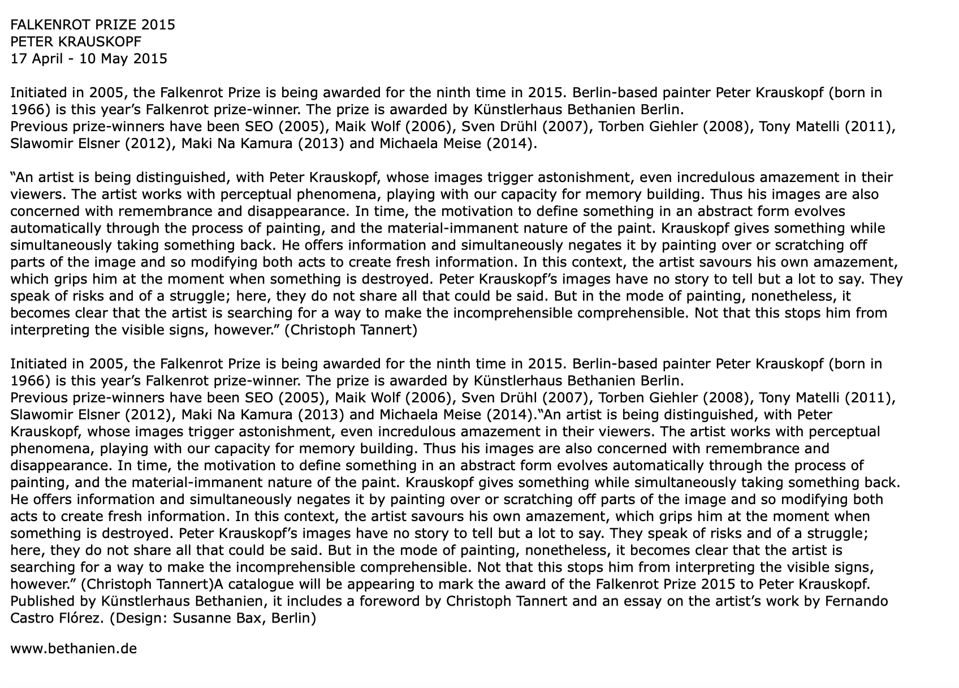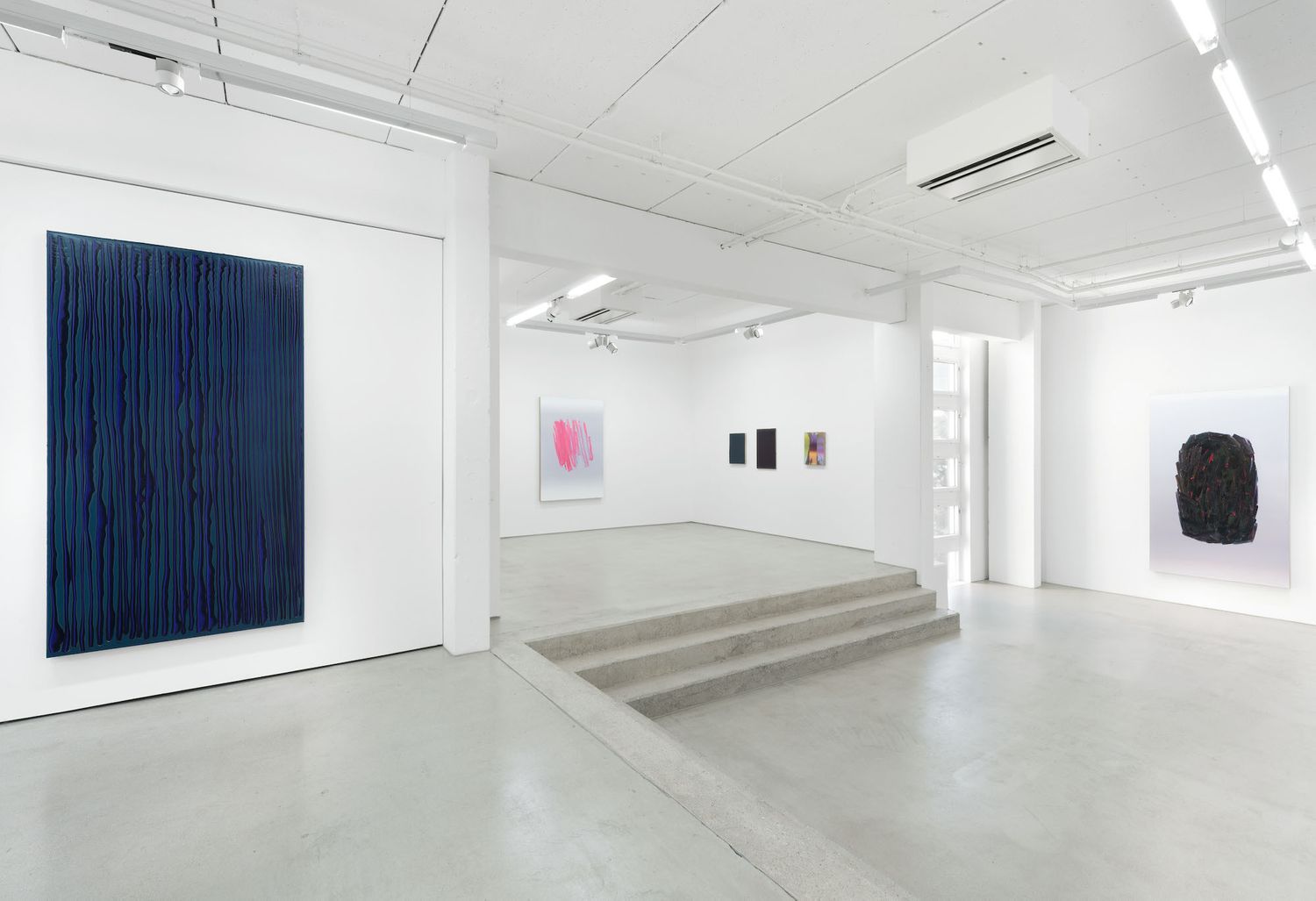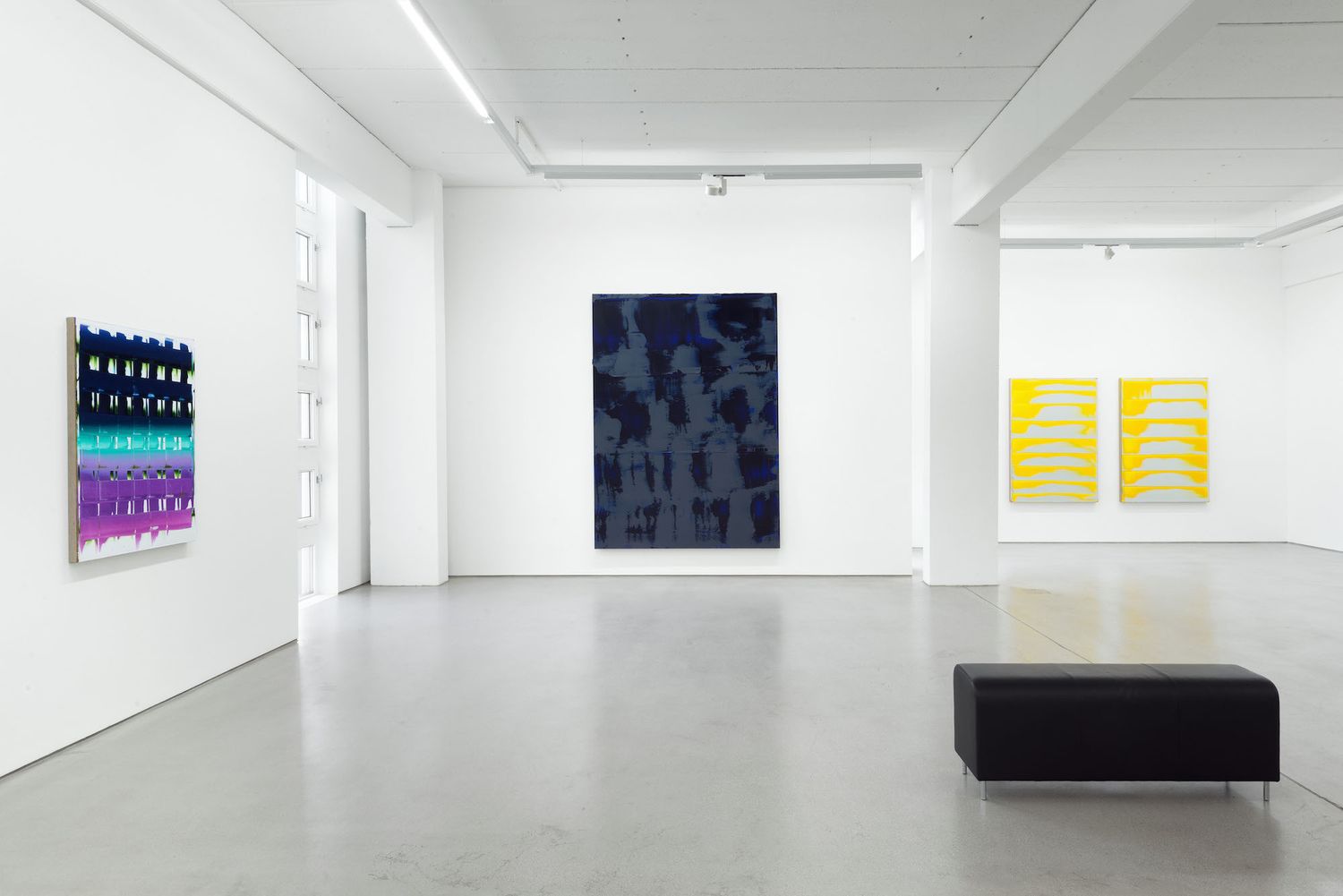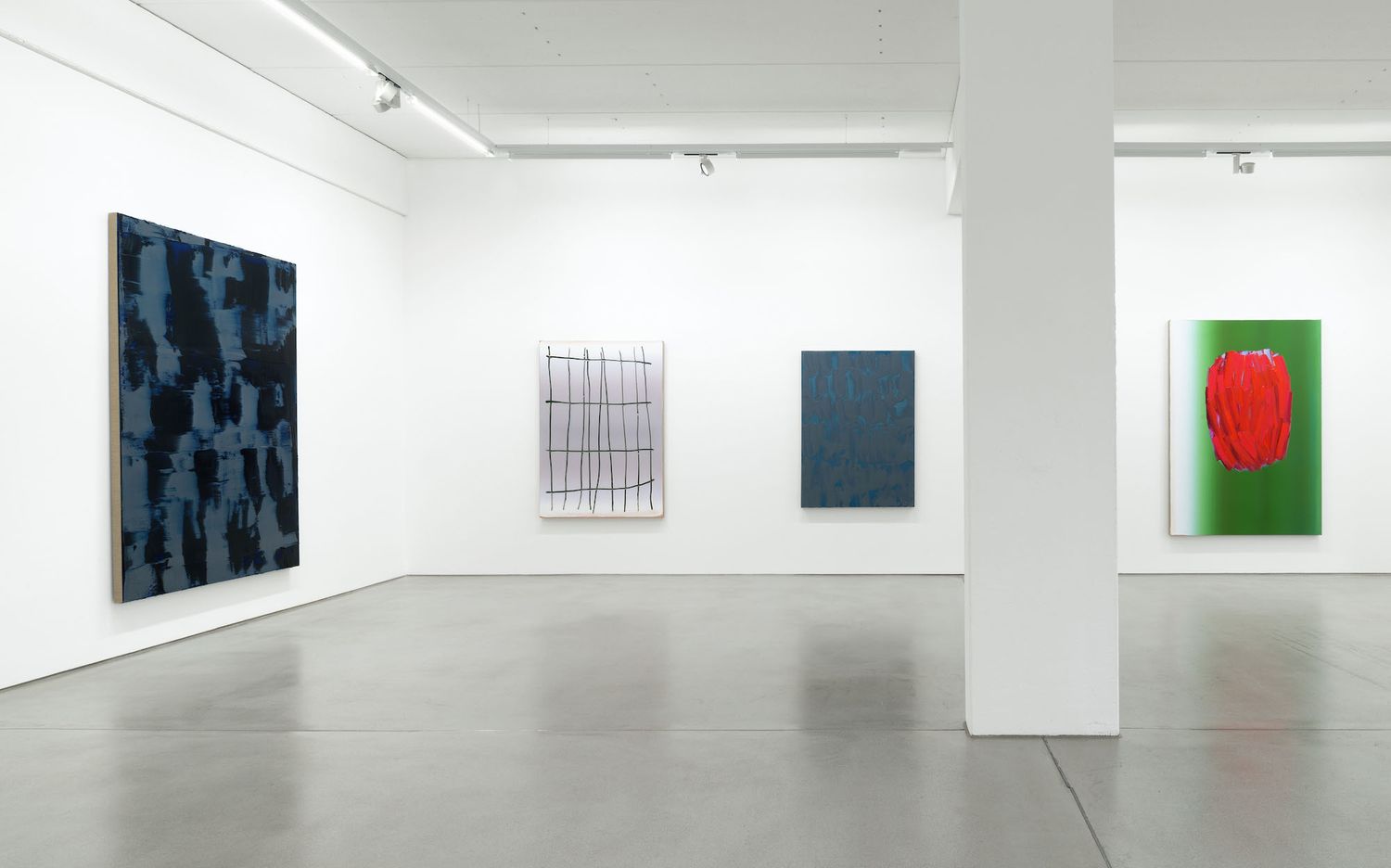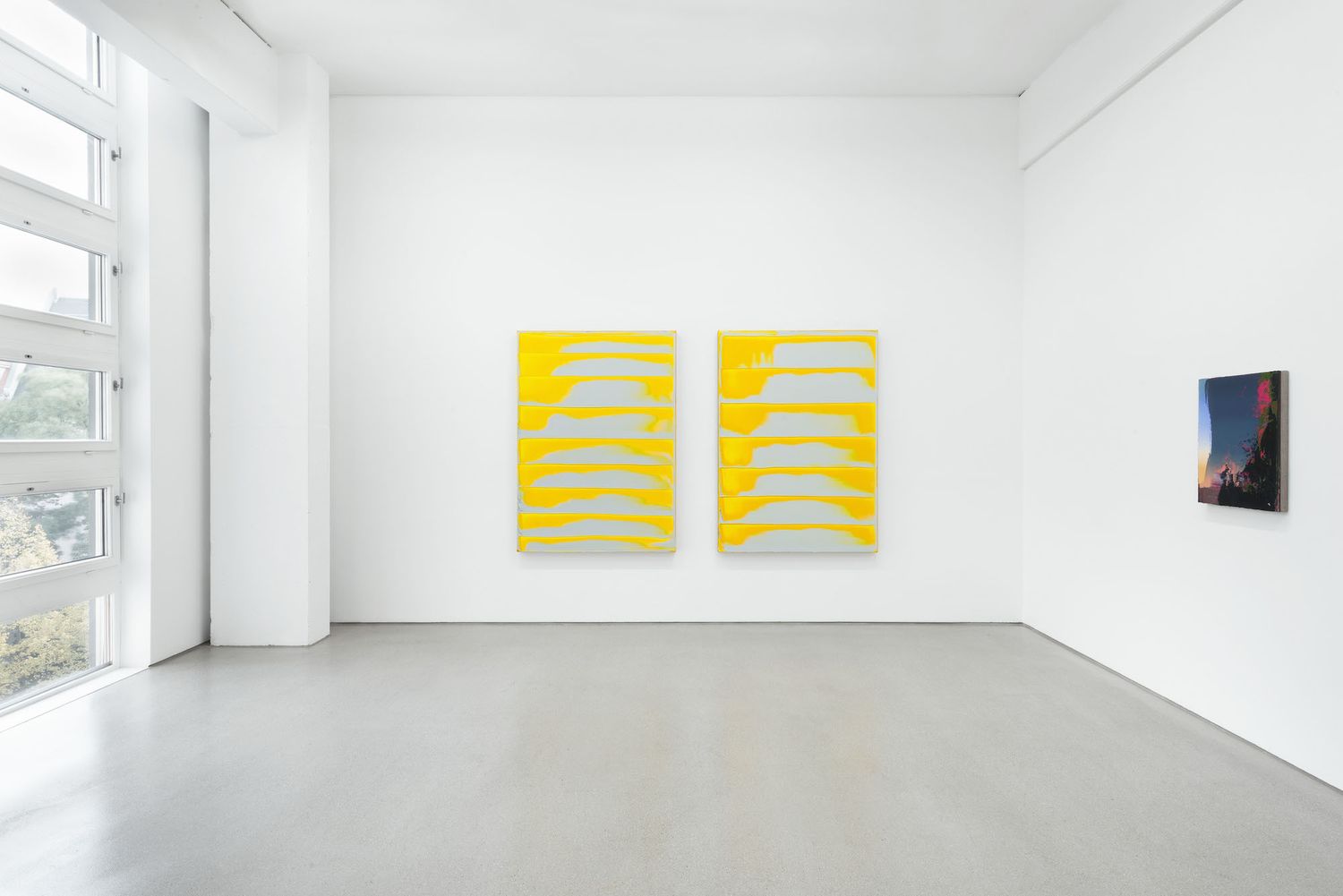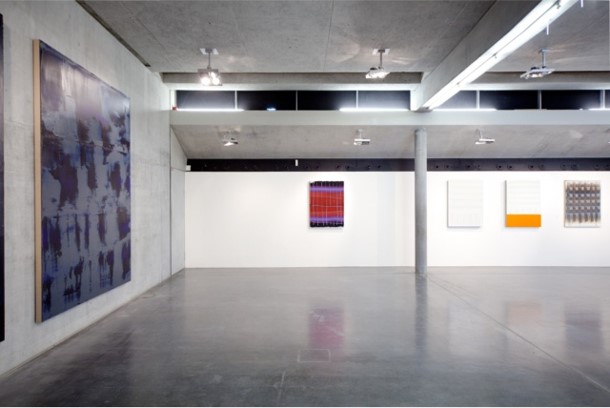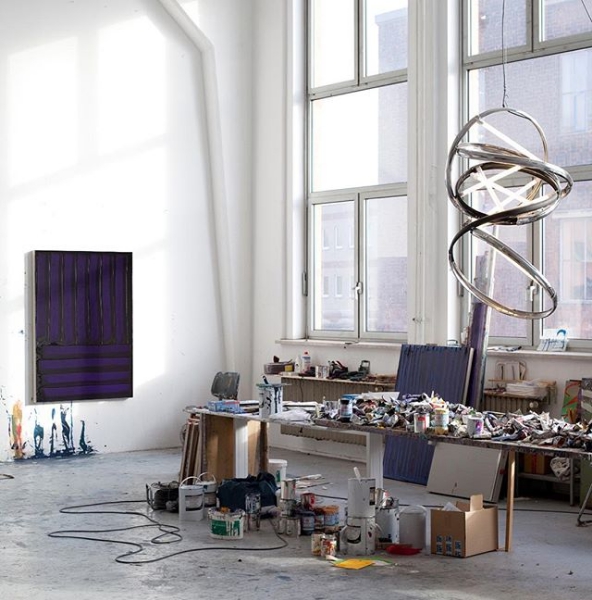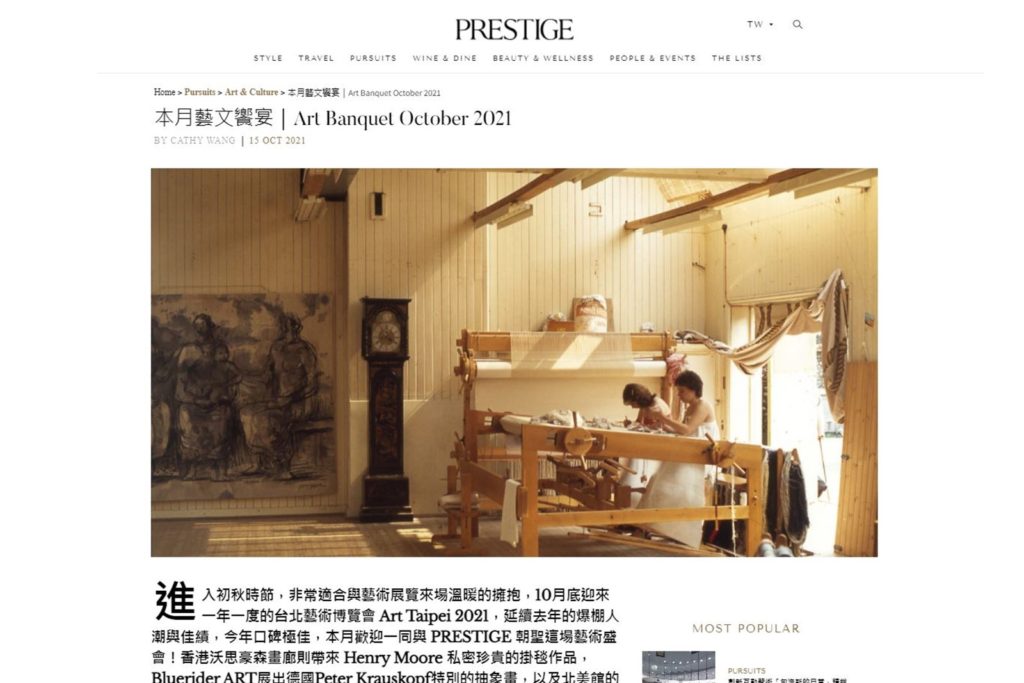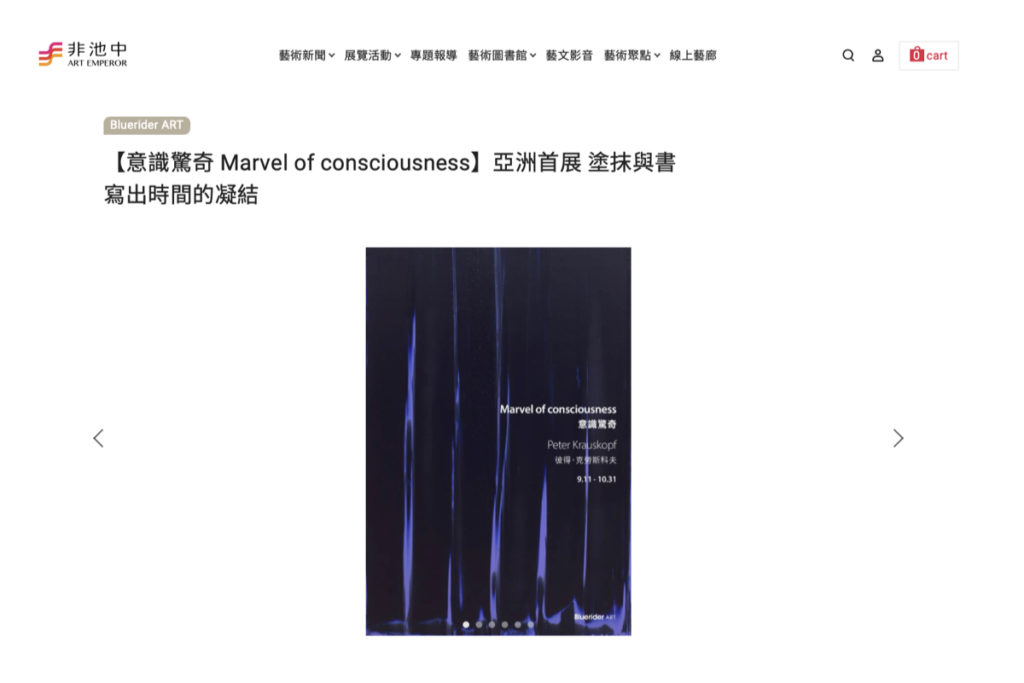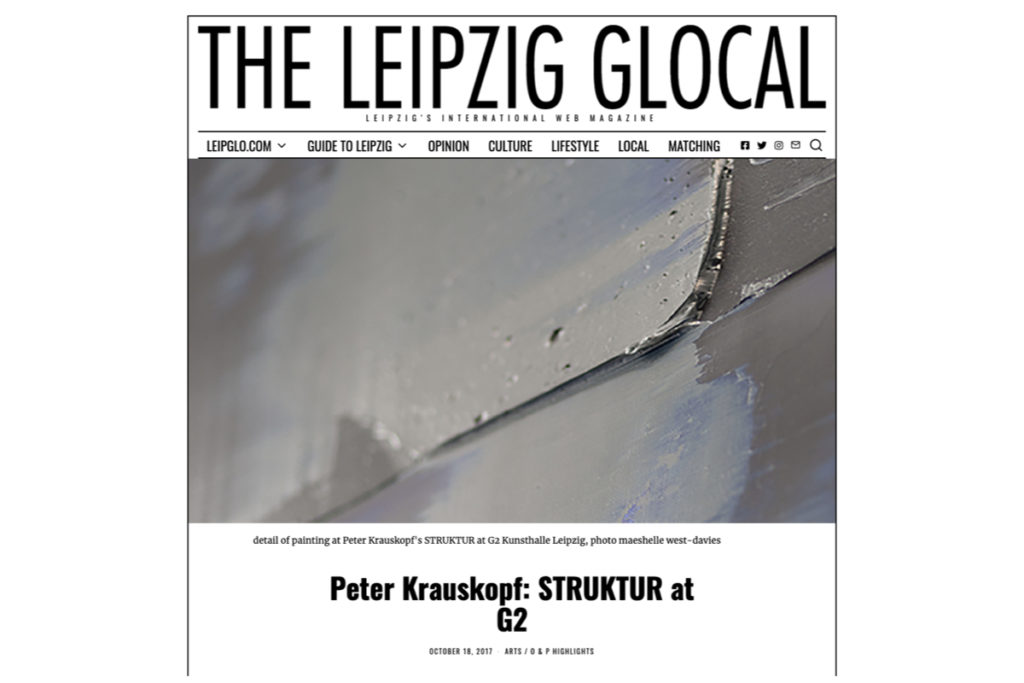看展覽Exhibition
預告片 Trailer
藝術家影片 Artist Video
台北·敦仁 展館 DunRen Gallery
“ 意識驚奇”
— Peter Krauskopf 彼得.克勞斯科夫 亞洲首個展
Bluerider ART 很榮幸宣布即將於9.11(六)推出「 意識驚奇」 Peter Krauskopf 彼得.克勞斯科夫亞洲首個展。Peter Krauskopf 彼得.克勞斯科夫(德,b. 1966) 生於德國萊比錫,就讀萊比錫視覺藝術學院,並受萊比錫畫派先驅 Arno Rink阿諾.林克指導完成學業。目前居住及創作於柏林。Krauskopf克勞斯科夫是萊比錫畫派中第一位由寫實走向抽象的藝術家。早期作品在觀念藝術上探討,也嘗試過「條幅畫」 (strip painting),而後不斷嘗試抽象藝術的可能性。西班牙哲學家暨藝術評論者Fernando Castro Flórez費爾南多.卡斯特羅.弗洛雷斯曾形容:「透過他神秘而寧靜的畫作,Peter Krauskopf彼得.克勞斯科夫打開了那扇驚奇之窗。面對棄絕光明的虛無喜悅,他繪製了一個讓我們可以找回最強烈美感的空間。」2015年他獲得國際當代藝術知名項目 Falkenrot Prize,曾受邀於歐洲重要城市柏林、慕尼黑、萊比錫、里斯本等城市舉辦個展,作品被紐倫堡日耳曼國家博物館(Germanisches Nationalmuseum Nuremberg)、G2萊比錫藝術館(G2 Kunsthalle Leipzig)、慕尼黑Munich Re風險管理藝術收藏(Munich Re Art Collection Munich)等機構典藏。
Peter Krauskopf 早期作品


NR 24/04, Alkydharz/Leinen, 80cm x 270cm, 2004 

NR 18/03, Alkydharz/leinen, 80cm x 260cm, 2003
Peter Krauskopf彼得.克勞斯科夫的創作以抽象繪畫為主,利用流體顏料反覆塗裝,再使用刮刀把顏料抹除下來,在整體畫面形成層層疊疊的表面狀態,而在深層處則有顏色的漸變,亦用反覆刮除,形成豐富複雜的紋理。更特別的是,他鮮少使用畫筆作畫,而是利用塗料本身去形塑層次,如同雕塑般在平面展開水平或垂直的轉折與生長。流體顏料的動向通常是不可預期的,藝術家必須運用全身力量、靈活地反應隨時產生變化的塗層,並將所有片段之處融合為一。顏料的擴張或是因刮除動作而產生的鋸齒邊緣,以及不同顏色交織的破碎層次都是極迷人的表現,Krauskopf克勞斯科夫對這種「反覆繪畫的過程」 (process of overpainting)相當感興趣,他認為這是對時間的「反覆書寫」(overwriting of time),抹去了過去的時間與回憶,再塗上新的一層歷史與記憶。他的作品乍看之下是抽象的,但其實都是一段時間的凝結物,表面均質化、平滑性,在已存在舊的表面上刷上新的顏料,再成為新的圖像。他讓過去與現在的畫面之間產生共存共生的關係,被認為是「時間的拼貼畫」。

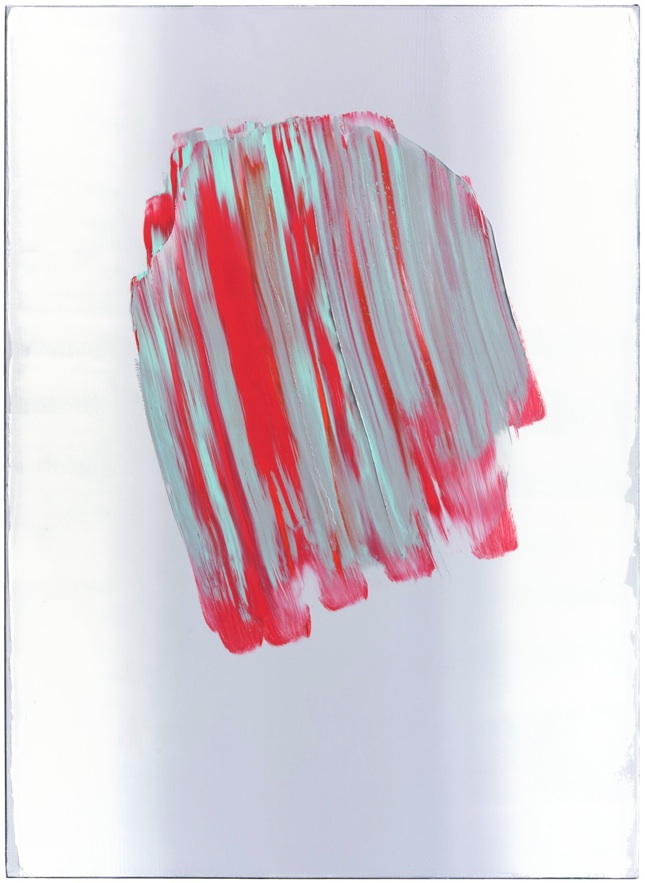
„KEIN TITEL“, B 200218, Öl/leinen, 180cm x 130cm, 2018 
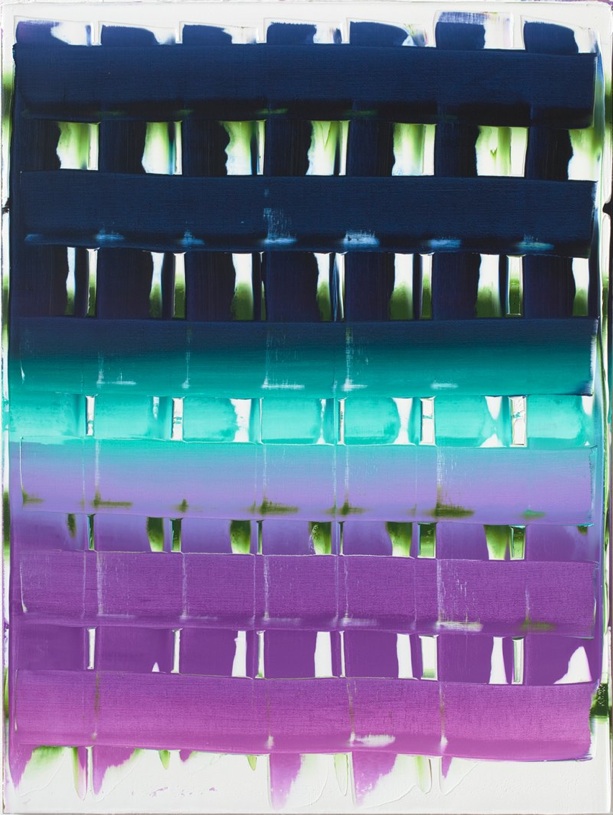
SCHULE, B 020317, Öl/leinen, 130cm x 100cm, 2017
回顧極簡主義 (Minimalism)是將型態或色彩純粹化,或還原至最小極限的表現潮流,並希望實現作品不具任何意義的狀態,只呈現物件「存在現在、位在這裡」的當前自我表述。像是風格多變的德國藝術家 Gerhard Richter葛哈.李希特在1970年代開始創作 Abstract Painting 抽象繪畫系列作品,開始在畫布上刷上大片原色,再堆疊出許多層次;而後,他開始使用自製的橡皮刮板來抹除和摩擦在畫布上的大片油彩,他讓繪畫「自行地演變」。又如德國藝術家 Sigmar Polke西格瑪.波爾克在1980年代對畫布進行的彩虹色強烈顏料實驗,將傳統顏料、漆、樹脂融合產生化學變化,呈現抽象表現的獨特性。也讓人聯想至抽象藝術大師代表人物 Mark Rothko馬克.羅斯科在色彩的浪漫與意念崇高間擺盪的抽象詮釋。層層顏料,在時間的推移下,每一次的刮除與磨合都展開新的一頁歷史,顏料發展訊息,又被收回,不怕破壞畫面,在前進與後退之間,Krauskopf克勞斯科夫在畫布的每條織線上,將記憶與消逝放入抽象的世界中。
這次在 Bluerider ART展出 Peter Krauskopf 彼得.克勞斯科夫個展為首度在亞洲地區登場的展覽,他的作品名稱都有固定編號並以創作年代識別,偶爾輔以名詞描述。此次展出:延續垂直線條的系列作品,如作品MINI Z, B 041220 (2020)、SCHULE, B 151018 (2018),或是對比色彩強烈的作品Z, B290920 (2020)、溫暖而明亮清晰的Z, B 121220(2020),都是Krauskopf克勞斯科夫在同一畫面構圖上不斷讓線條與顏色發生變化的實驗,細節又如同呼吸般自然流暢。另外也展出相當知名的 ALTESBILD 系列作品,德文原意為「以前的圖像」(old picture),展現Krauskopf克勞斯科夫對於藝術史中繪畫編碼的追求,交錯的塗料及有機片狀的色塊,使觀者的思緒回到了鬱鬱蔥蔥的風景歷史中,「過去與現在」的完成之間創造了共生的關係。藝術家Peter Krauskopf彼得.克勞斯科夫帶領觀者進入「意識的驚奇」(Marvel of consciousness),在畫布上領悟對於美的深層感知,從哲學、心理、精神層面,走入意識的詩句篇章中,驚奇於面對抽象藝術的自我探索。
Z-paintings “是對於「使用者介面」圖像方式的表達,我以二至三層的顏料疊加,然而最下層卻再次的暴露(裸露)在外,這不僅是一種繪畫破壞或考古學的行為,也是一種證明畫家身體存在的姿態。” – Peter Krauskopf, Z, B 121220, 140x90cm, 2020, Oil on linen (左)Z, B290920 , 140x90cm, 2020, Oil on linen(右)
ALTES BILD “德文原意為「以前的圖像」(old picture),他們是介於抽象畫與風景畫之間,一種對於色彩導向繪畫的表達。例如,我們從過去幾個世紀的古典歐洲油畫中得知,畫家們遵循的原則是在一幅畫作中,顏色相互照亮和遮蔽,這也是一個主要繪畫原則。” – Peter Krauskopf, ALTESBILD, B 100121, 51x38cm cm, 2021, Oil on linen(左)ALTESBILD, B170421, 65x48cm, 2021, oil on linen(右)
“意識驚奇” –
Peter Krauskopf 彼得.克勞斯科夫 亞洲首個展
展期:2021.9.11 – 2021.10.31
Bluerider ART 台北.敦仁
Tue.-Sun. 10am-7pm
台北市大安區大安路一段101巷10號一樓
看作品Works
SCHULE, B 151018
2018 | 150x100cm| oil on linen
GELBES BILD Z_, B 021115
2021 | 150x110cm| oil on linen
Z, B290920
2020 | 140x90cm| oil on linen
Z, B 121220
2020 | 140x90cm| oil on linen
Z, B 150920
2020 | 130x80cm| oil on linen
Z, B 170920
2020 | 130x80cm| oil on linen
ALTESBILD, B 100121
2021 | 51x38cm| oil on linen
ALTESBILD, B 010621
2021 | 65x47cm| oil on linen
ALTESBILD, B170421
2021 | 65x48cm| oil on linen
MINI Z, 00Serie, 2von3 Teile, B 041220
2020 | 48x33cm| oil on linen
B151016
2016 | 140x100cm| oil on linen
Gray, B 250219
2019 | 140x100x7cm| oil on linen
KEINTITEL, B 260419
2019 | 140x100x5cm| oil on linen
藝術家Artist
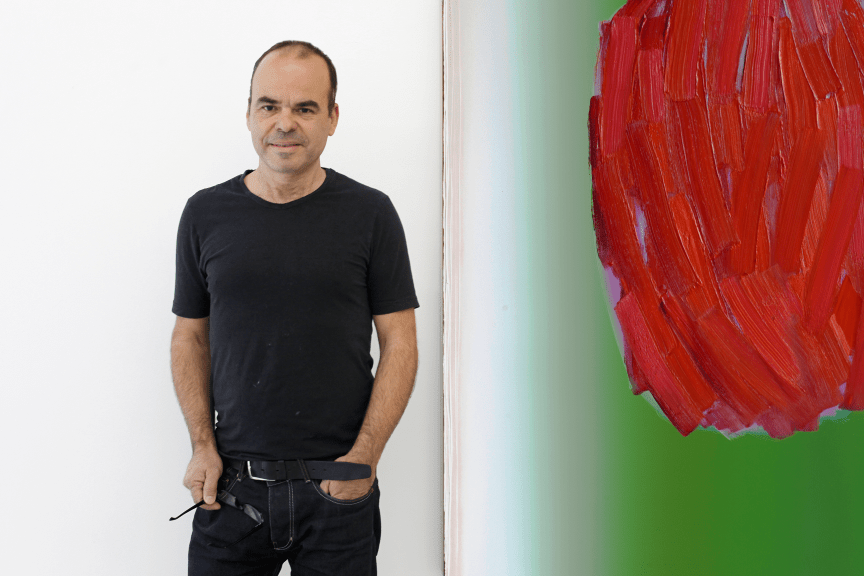

Peter Krauskopf 彼得.克勞斯科夫
(Germay, b.1966)
Peter Krauskopf 彼得.克勞斯科夫(德,b. 1966) 生於德國萊比錫,就讀萊比錫視覺藝術學院,並受萊比錫畫派先驅 Arno Rink阿諾.林克指導完成學業。目前居住及創作於柏林。Krauskopf克勞斯科夫是萊比錫畫派中第一位由寫實走向抽象的藝術家。早期作品在觀念藝術上探討,也嘗試過「條幅畫」 (strip painting),而後不斷嘗試抽象藝術的可能性。西班牙哲學家暨藝術評論者Fernando Castro Flórez費爾南多.卡斯特羅.弗洛雷斯曾形容:「透過他神秘而寧靜的畫作,Peter Krauskopf彼得.克勞斯科夫打開了那扇驚奇之窗。面對棄絕光明的虛無喜悅,他繪製了一個讓我們可以找回最強烈美感的空間。」2015年他獲得國際當代藝術知名項目 Falkenrot Prize,曾受邀於歐洲重要城市柏林、慕尼黑、萊比錫、里斯本等城市舉辦個展,作品被紐倫堡日耳曼國家博物館(Germanisches Nationalmuseum Nuremberg)、G2萊比錫藝術館(G2 Kunsthalle Leipzig)、慕尼黑Munich Re風險管理藝術收藏(Munich Re Art Collection Munich)等機構典藏。
„Z“, B 281114, Öl/leinen, 130cm x 100cm ,2014, Peter Krauskopf 為2015 年 Falkenrot Prize 當代藝術大獎得主。
Peter Krauskopf – S T R U K T U R at G2 Kunstalle, Leipzig, 2018
“Drift”, 2018 at Kunsthaus Kaufbeuren (德國考夫博伊倫博物館) , Germany
媒體報導 Press

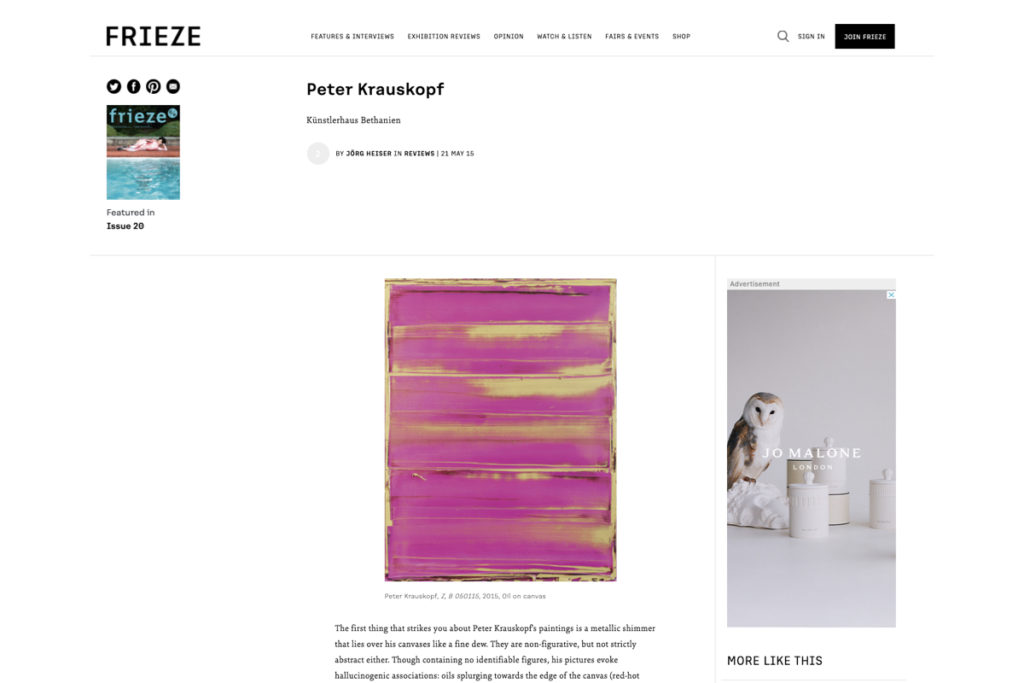
FRIEZE:Peter Krauskopf 

MEHR BERLIN: VIER SEITEN KUNST, POLITIK UND STADTGEFUHL
Peter Krauskopf
Germay, b.1966
Education
1997 Graduate School Graduation at Hochschule für Grafik und Buchkunst in Leipzig.
Selected Solo Exhibitions
2021 STUDIO, with Susanne Kühn, Museum der bildenden Künste Leipzig, DE
2021 Peter Krauskopf solo exhibition, Bluerider ART, Taipei, Taiwan
2020 Peter Krauskopf,Walte Storms ,GalerieMunich,Germany
2019 Paintings 2015-2019, Munich RE Art Collection, München, DE
2019 Berlin-Klondyke, Galeria Monumental, Lisbon, Portugal
2018 Code of color deGalería Álvaro Alcázar,Madrid,Spain
2018 DriftKunsthaus Kaufbeuren,Kaufbeuren,Germany
2018 GrünsteinWalter Storms Galerie,Munich,Germany
2017 StrukturG2 Kunsthalle,Leipzig,Germany
2017 40 Jahre Walter Storms Galerie , 1977 – 2017,Walter Storms
Galerie,Munich,Germany
2016 Hide And SeekJochen Hempel, BerlinBerlin,Germany
2016 Walter Storms Galerie,Munich,Germany
2015 DioramaGalería Álvaro Alcázar,Madrid,Spain
2015 Falkenrot Preis 2015Künstlerhaus Bethanien,Berlin,Germany
2014 Zwalter storms galerie – Ismaninger Strasse,Munich,Germany
2014 Jochen Hempel Leipzig,Leipzig,Germany
2013 Elbe -Galeria Vilaseco,A Coruña,Spain
2012 GrauJochen Hempel Berlin,Berlin,Germany
2012 Landschaft mit abstraktem GemäldeGalerie Neue Meister
2012 Albertinum,Dresden,Germany
2012 Kunstgewerbemuseum Dresden,Dresden,Germany
2011 BlockWalter Storms Galerie,Munich,Germany
2009 Walter Storms Galerie,Munich,Germany
2008 Forum Kunst Rottweil,Rottweil,Germany
2008 Jochen Hempel Leipzig,Leipzig,Germany
2007 Mies van der Rohe Haus,Berlin,Germany
2006 Arbeiten 2006Galerie Elly Brose-Eiermann (former büro | für | kunst) –
Dresden,Dresden,Germany
2006 Galerie Christian Roellin – St. GallenSt. GallenSwitzerland
2005 Walter Storms Galerie,Munich,Germany
2004 Fehlfarben – Staatliche Kunstsammlung DresdenGalerie Neue Meister –
AlbertinumDresdenGermany
2001 EIN LOB DER KLEINEN DIFFERENZEN – Zur Konstruktion 1/01 von Peter
KrauskopfGalerie Paula Böttcher,Berlin,Germany
2000 Jochen Hempel Leipzig,Leipzig,Germany
2000 Stiftung Moritzburg – Kunstmuseum des Landes Sachsen-Anhalt,Halle,
Saale,Germany
2000 voxxx.galerie,Chemnitz,Germany
1999 Neue Arbeite-Galerie Frank Schlag & Cie. GmbH,Essen,Germany
Selected Group Exhibitions
2021 New Luxe Bluerider ART Shanghai, China
2021 Made in Germany, Bluerider ART, Taipei, Taiwan
2020 Switch ON, Bluerider Art Gallery, Taipei, Taiwan
2019 Berlin-KlondykeGaleria Monumental,Lisbon,Portugal
2018 Summer In The CityGalerie Asbæk,Copenhagen,Denmark
2018 Summer in the CityMartin Asbæk Gallery,Copenhagen,Denmark
2018 MdbK meets G2 Malerei aus Leipzig nach 2000Museum der bildenden Künste Leipzig,Leipzig,Germany
2018 DepotJochen Hempel Leipzig,Leipzig,Germany
2018 Join the Dots / Unire le distanzeSalone Degli Incanti – Ex Pescheria Centrale,Trieste,Italy
2018 Una treguaGalería Álvaro Alcázar,Madrid,Spain
2017 La Foresta AnimadaGalería Álvaro Alcázar,Madrid,Spain
2017 ¡Manos Arriba, Esto Es Un Atraco!CCA Andratx,Andratx,Spain
2017 Berlin-KlondykeSOEHT 7,Berlin,Germany
2017 Golden AssLADEN FUER NICHTS,Leipzig,Germany
2017 Berlin-KlondykeMaribor Art Gallery,Maribor,Slovenia
2017 40 Jahre Galerie, Jubiläumsausstellung / Teil 1Walter Storms Galerie,Munich,Germany
2016 Peter Krauskopf / Yuval Shaul / Yehuda Altmann – The WalkSpinnerei archiv
massiv,Leipzig,Germany
2016 Sammlung HildebrandG2 Kunsthalle,Leipzig,Germany
2016 10 AñosGalería Álvaro Alcázar,Madrid,Spain
2016 ExchangeJonathan Ferrara Gallery,New Orleans, LA,USA
2015 Galerie Jochen Hempel @ JFG – Gallery Exchange ExhibitionJonathan Ferrara
Gallery,New Orleans, LA,USA
2015 Gute Kunst? Wollen!Auf AEG,Nuremberg,Germany
2015 Imago Mundi. Luciano Benetton Collection. Mappa dell’arte nuovaFondazione Giorgio Cini,Venice,Italy
2015 Berlin – Klondyke: 1. Berlin-EditionSalon Dahlmann,Berlin,Germany
2015 Berlin Artists’ Statements – announcementBWA Contemporary Art Gallery in Katowice,Katowice,Poland
2015 G2 #1 – Leipzig 2015 – Sammlung HildebrandG2 Kunsthalle,Leipzig,Germany
2014 brennzeitenKunst und Literatur Forum Amalienpark e.V.,Berlin,Germany
2014 5 jahre schellingstr. 48Walter Storms GalerieMunich, Germany
2014 Architekt – Busdriver – Zwei Brücken – 20 Jahre Gesellschaft für Moderne Kunst in DresdenKunsthalle im Lipsiusbau,Dresden,Germany
2014 InterferenciasGaleria VilasecoA ,Coruña,Spain
2014 Group ShowJochen Hempel Leipzig,Leipzig,Germany
2013 salondergegenwart 2013salondergegenwart,Hamburg,Germany
2013 Berlin-KlondykeHipp Halle Gmunden,Gmunden,Austria
2013 Schöne Landschaft – Bedrohte Natur. Alte Meister im Dialog mit zeitgenössischer KunstKunsthalle Osnabrück,Osnabruck,Germany
2013 Berlin KlondykeWerkschauhalle,Leipzig,Germany
2013 jetzt hier. Gegenwartskunst. Aus dem KunstfondsKunsthalle im Lipsiusbau,Dresden,Germany
2012 Berlin-KlondykeNeuer Pfaffenhofener Kunstverein,Pfaffenhofen,Germany
2012 Alles WasserGalerie Mikael Andersen – Berlin,Berlin,Germany
2012 geteilt | ungeteilt – Kunst in Deutschland 1945 bis 2010Galerie Neue Meister – Albertinum,Dresden,Germany
2011 Berlin Klondyke 2011Art Center Los Angeles,Los Angeles, CA,USA
2011 Berlin Klondyke 2011The Odd GalleryDawson, YT,Canada
2011 Das versprochene LandGalerie Neue Meister – Albertinum,Dresden,Germany
2009 KonstruktivLeinemann-Stiftung für Bildung und Kunst,Berlin,Germany
2009 Begegnung Bauhaus. Kurt Schmidt und Künstler der Avantgarde – von Kandinsky bis VasarelyKunstsammlung Gera – Orangerie,Gera,Germany
2008 Alge – Dillmann – KrauskopfKunsthalle Lingen,Lingen,Germany
2007 30 Jahre walter storms galerie – JubiläumsausstellungWalter Storms Galerie,Munich,Germany
2006 global playersBTAP (Beijing Tokyo Art Projects) – Tokyo,Tokyo,Japan
2006 Global Players – Zeitgenössische Künstler aus Japan und DeutschlandLudwig Forum für Internationale Kunst,Aachen,Germany
2005 Summer Group ShowJochen Hempel Leipzig,Leipzig,Germany
2005 Martin Borowski | Peter Krauskopf | Sophia Schama – FRIES — MalereiGalerie Elly
Brose-Eiermann (former büro | für | kunst) – Dresden,Dresden,Germany
2005 Leipzig und die konstruktiv-konkrete KunstKunsthalle der Sparkasse Leipzig,Leipzig,Germany
2002 Wunschbilder – Neuerwerbungen des Kunstfonds SachsenMuseum der bildenden Künste Leipzig,Leipzig,Germany
2000 Bildwechsel – GruppenausstellungKunstsammlungen Zwickau – Städtisches Museum,Zwickau,Germany
1998 Vitale Module. Gegenwartskunst aus SachsenKunstverein Ludwigshafen,Ludwigshafen,Germany
1997 Vitale Module. Gegenwartskunst aus SachsenKunsthaus Dresden,Dresden,Germany
Collections
Berlinische GalerieBerlin
ALTANA Kulturstiftung im Sinclair-HausBad Homburg
Germanisches NationalmuseumNuremberg
Galerie Neue Meister – AlbertinumDresden
Kupferstich-KabinettDresdenG2 KunsthalleLeipzig
Stiftung Moritzburg – Kunstmuseum des Landes Sachsen-AnhaltHalle, Saale
Munich Re Art CollectionMunich
